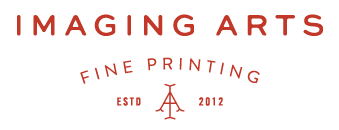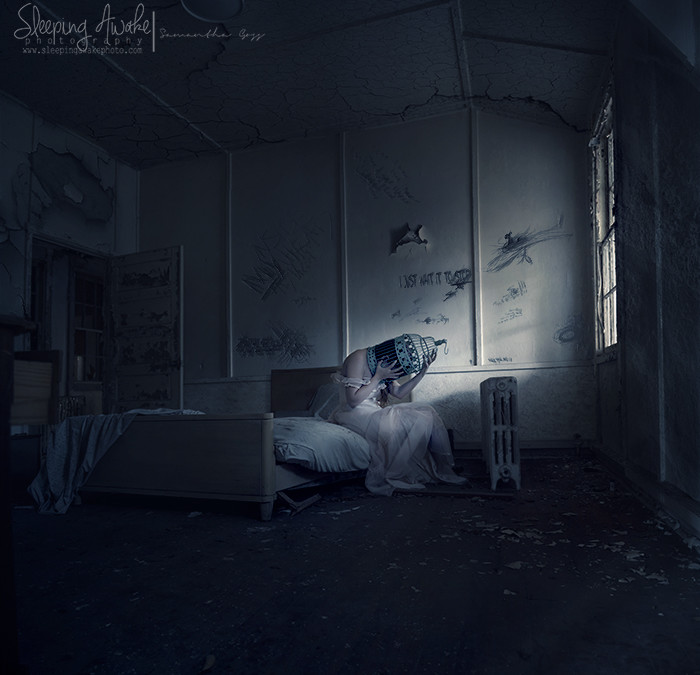Last week we started a new series focusing on the work of various artists that we’ve had the honor of working with over the years. Part two of this series brings you an interview with conceptual photographer Samantha Goss. If you have any interest in post processing or using post processing to take your images beyond what you create in camera then there may be some good things here for you to read. Samantha and her work speak for themselves much better than I could speak on their behalf, so without further delay here is our interview with Samantha.
What’s your earliest memory of you taking something from your imagination and turning it into art?
According to my parents, I’ve always been involved in art. The absolute earliest I can remember would probably be the 3rd grade. I used to do “illustrations” all the time. I’ve never been good with words, so I would try to tell stories with my art.
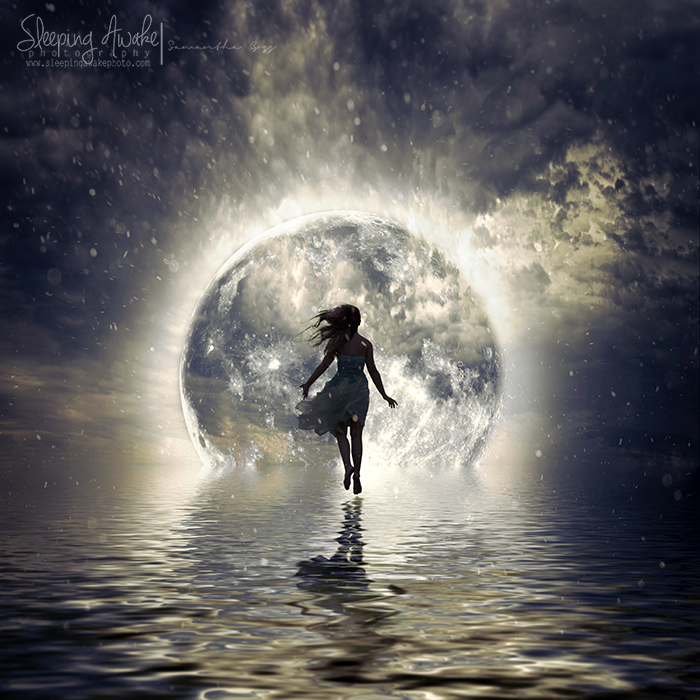
Dreamwalker © Samantha Goss
Would you say your work originates more from thoughts or from feelings?
Both for sure. I love telling stories with my work and I feel like the majority of my work is based on both of those concepts. I try to keep my style but make the stories relatable so connecting with others is a lot easier.
What is one piece of yours that you would like people to not only see but to also understand? Will you explain it to us?
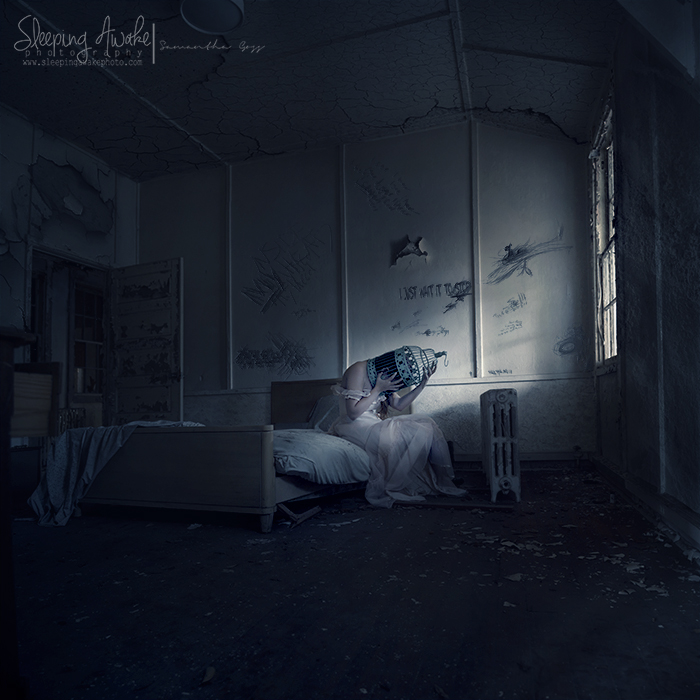
Voices © Samantha Goss
I have a lot of images I want people to see and understand but the one that I’ve been most passionate about is my image called “Voices”. I have a friend whose sister had schizophrenia. Her sister passed away in November 2014. With this image I combined both schizophrenia and my sleeping disorders to show how it feels. Often at night my mind will race. I can’t stop thinking and try to drown out my thoughts with a lot of white noise. It’s not just my thoughts though. I have a sleeping disorder called Sleep Paralysis and when waking up in this paralyzed state, I’ll hallucinate, hear things, and become delusional. This image is all about portraying those feelings of the voices, or my own thoughts, never stopping. The feeling of being caged inside my own head and there isn’t much that can be done. It effects my life dramatically and I’ve even lost a few jobs because of my sleeping issues. Yes, I’ve been to a neurologist, but I’d rather “suffer” from my sleeping disorders for the rest of my life than to be a zombie again with the medications I was given. Mental illnesses are very misunderstood and definitely mistreated. Humans are fragile and especially anyone that suffers a mental illness needs more time and care. You don’t see that anymore in today’s society. It seems like a lot of the world today have lost their heart and emotions.
Have you ever been hired by someone to turn their concept into a final work? Would you consider doing that?
Generally it’s only my concepts. I want to keep my work as 100% mine as possible, so I never use other people’s concepts. The sole purpose of me getting into photography was to express myself because I do feel like I have something to say and like I mentioned before I’m much better at showing these things through images than writing or talking about them. I’d love to team up with other creative people to create amazing images, but I typically do not. I generally shoot alone because of my time restrictions with work and the other daily activities I do. My shoots are planned but they’re shot last minute making it hard to get models and make-up and hair artists.
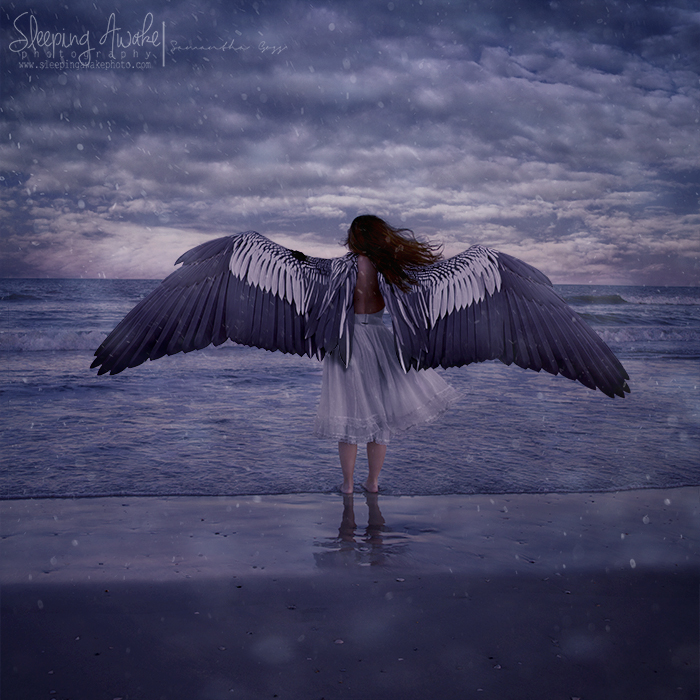
Taking Flight © Samantha Goss
As a photographer myself I’ve come across many people who consider photography a separate thing from “art”. What are your thoughts on photography’s place in the art world?
Photography is very much an art form. Photography consists of much more than you’d think. With today, everything is digital and taking a photo is just another day in the life of a selfie queen. I think that’s where people start to believe photography isn’t an art anymore but they’re wrong. So much goes into getting light to be correct especially if you’re working with studio lighting. You have a light for the hair, light for the face, light for the background, a reflector for the other side of the face, etc. By the end of it all you have 10 lights just to photograph a headshot.
I’d highly suggest anyone that does photography to start out in a dark room and learn everything you possibly can. You’ll notice more and take more pride in your work. With darkroom work you have to make sure everything is as perfect as possible in camera. While you can dodge and burn and even do some other manipulation works, the darkroom isn’t photoshop and it’s not fast and easy by any means. After you get that perfect shot, you have to make sure you don’t expose your film or reel it too fast so it doesn’t cause static. That’s not the end of it either. You have to then process the film which you can definitely do wrong as well. The temperature of the chemicals need to be just the right temperature in order to not over process it or under process it. You have to make sure you fix the image or else you’ll lose it when opening the container. After all that is done, you have to rinse and dry the film and make sure that there is no dust so it won’t adhere to the emulsion. Also, water spots… those will be the bane of your existence. You can go back and clean them later but they’re annoying. You have to store them away so they don’t scratch either. That’s just the basics of processing your film. You haven’t even got to printing it yet. When you go into printing you can either scan the negatives and print from a printer or print them from an enlarger on light-sensitive photographic paper.
I remember reading a while back a post from a guy talking about how cold photographs are and how he didn’t consider them to be art. Then he started comparing paintings to photographs. You honestly can’t compare one to the other because they’re both different in their own ways and both of them do consider time, talent, education and passion.
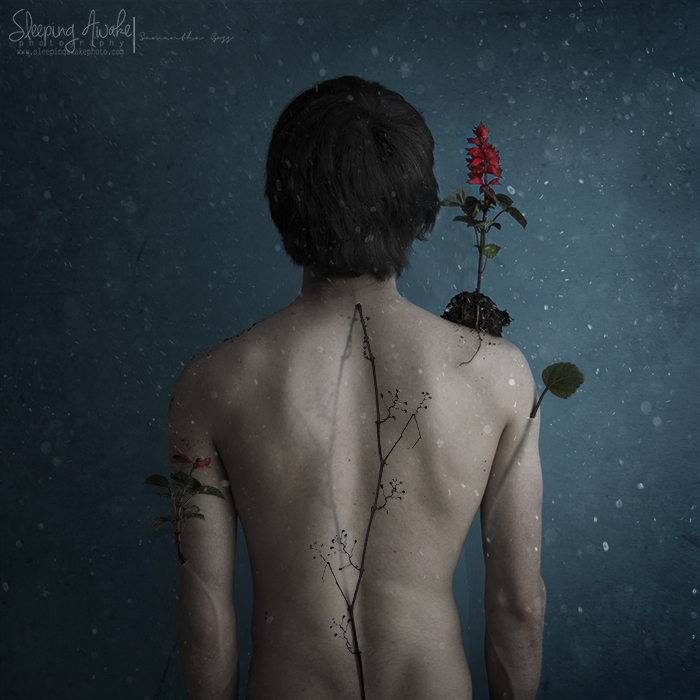
Life Support © Samantha Goss
What gear do you use? How important is gear to you?
I love film photography but I do shoot in digital. I currently use a Canon EOS 6D and a 28-135mm f/3.5-5.6IS USM lens. I pretty much use that lens for all my images and just recently upgrade to a 6D from the 7D. Gear isn’t too important to me. Yes, I do need a good camera for quality prints especially because I’m hanging them in galleries or creating them for other purposes, but I don’t make it a huge priority to get a lot of gear. I typically only shoot in natural light because I generally shoot outside and I don’t like to carry a lot of equipment with me. I think most I bring is my camera, lens, tripod, and if it ends up being too dark in an area I have my speedlite with me. Since I do mostly self-portraits, based on the above mentioned time crunch, I always have a wireless shutter remote. I personally believe you don’t have to have a wide variety of items in your photography inventory as much as you should have proper knowledge of what items work best for you and your work. I have a 50mm, 85mm, and a 300mm macro lens and never use them. Why? The type of work I do and what I’m wanting out of my images do not call for these lenses. So to me, all I need is my camera body, my one lens, shutter release, and tripod. I’ve created all my images that way too. Occasionally I’ll use external lighting sources.
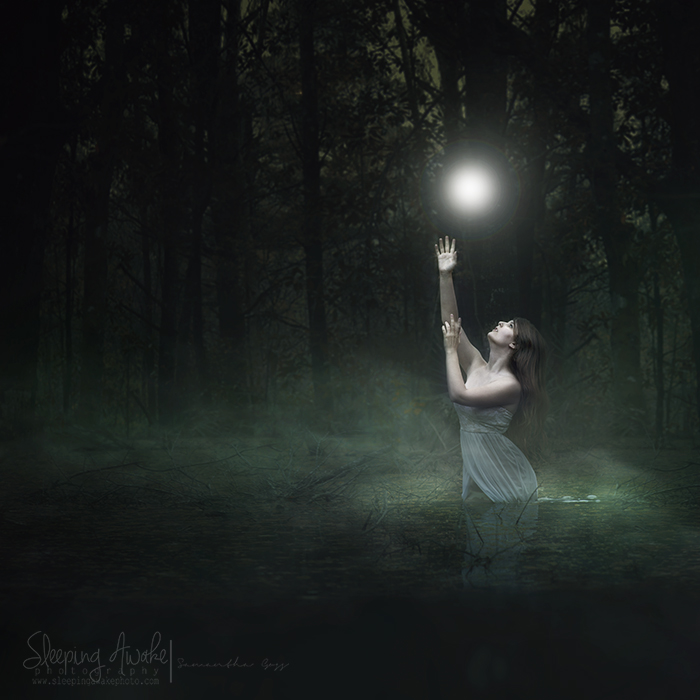
Finding Light © Samantha Goss
Your work is highly conceptual. Tell us a little about how your work goes from idea to finished product. What advice would you have for others who may have creative ideas yet are intimidated by post processing? Where can they go to learn and how did you learn to do your process?
My work is based on my life experiences and dreams. If something is happening in my life, you can guarantee it will end up as a conceptual image later on. A great example would be my image “Taking Flight”. That image is all about how I was letting my past and terrible friendships hold me down to the ground even though I was very much ready to fly to my future and let it all go. After I created that image, it helped me to heal from these people and hard times and since then I haven’t looked back. That image was a real life turning point I guess you could say.
What I do to take these ideas and translate them is I write them down, meditate on them, and the draw out my concepts. If it’s a heavily manipulated image, drawing it out helps me to remember and keep things in order for when I go to photograph an image. I’m also not afraid to fail. There has been so many images I’ve tried to create and would have to go and photograph them multiple times based on mistakes I’ve done. As annoying as that it, I learned a lot from it and I think that’s the beauty of “failure”. You can always learn from your mistakes and the next time you go to shoot you’ll be better and know exactly what you’re looking for out of your images.
As far as post processing goes, I say don’t be afraid because it’s all trial and error. Just like anything else, you practice until you’re better than you were before. I love to help people learn new things so you can come directly to me for mentoring sessions or future workshops, but I would highly suggest that you take time to practice. If you’re not a very patient person then either you need to learn patience or this isn’t your type of photography. Generally a manipulated image can take anywhere from 4-10 hours for me depending on what is going on in the image.
Does seeing your work in print differ from seeing it on a monitor? If so, how?
Yes, dramatically! Each monitor differs from one another. Some monitors are too dark, too bright, or have yellow, blue, or red tints, but very few are actually calibrated properly. Seeing a print in person is what you see is what you get. It doesn’t get any darker, the colors do not change, and seeing it in person is more than just the photograph. Paper type plays a huge role in printed images. My favorite for my type of work has always been Hahnemhule German Etching. I love the texture of the paper and how it displays my image’s colors. I also love to draw and that type of paper with ink gives it a charcoal drawing feel to it. It’s delicate and smudges and scratches just like it too! Which, oddly enough, I actually love that about the paper.
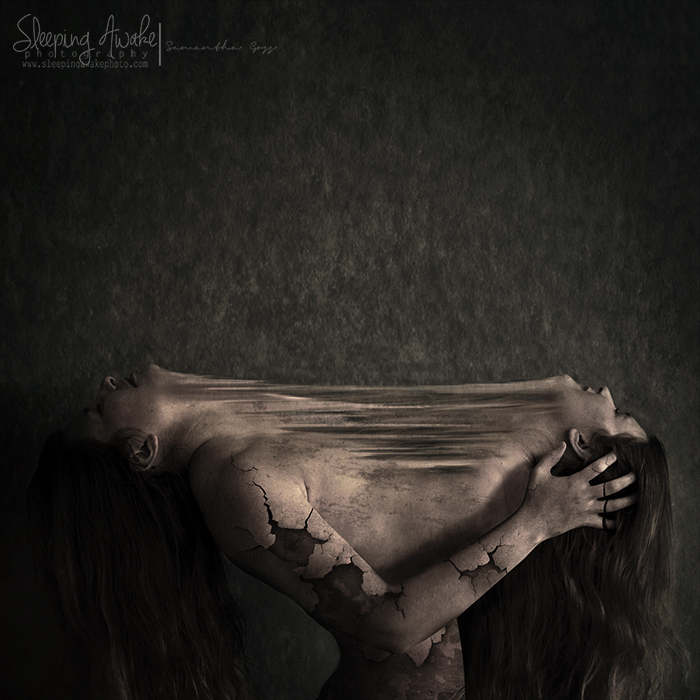
Mishappen Consternation © Samantha Goss
Where can people buy your work?
You can directly contact me at sgossphoto@hotmail.com
website: www.sleepingawakephoto.com
facebook : www.facebook.com/samanthagossphoto
flickr: www.flickr.com/sleepingawakephoto
Thanks Samantha for taking some time to answer our questions. You can contact her by any of the means above. And please, admire these images, but don’t use them without Samantha’s permission.
